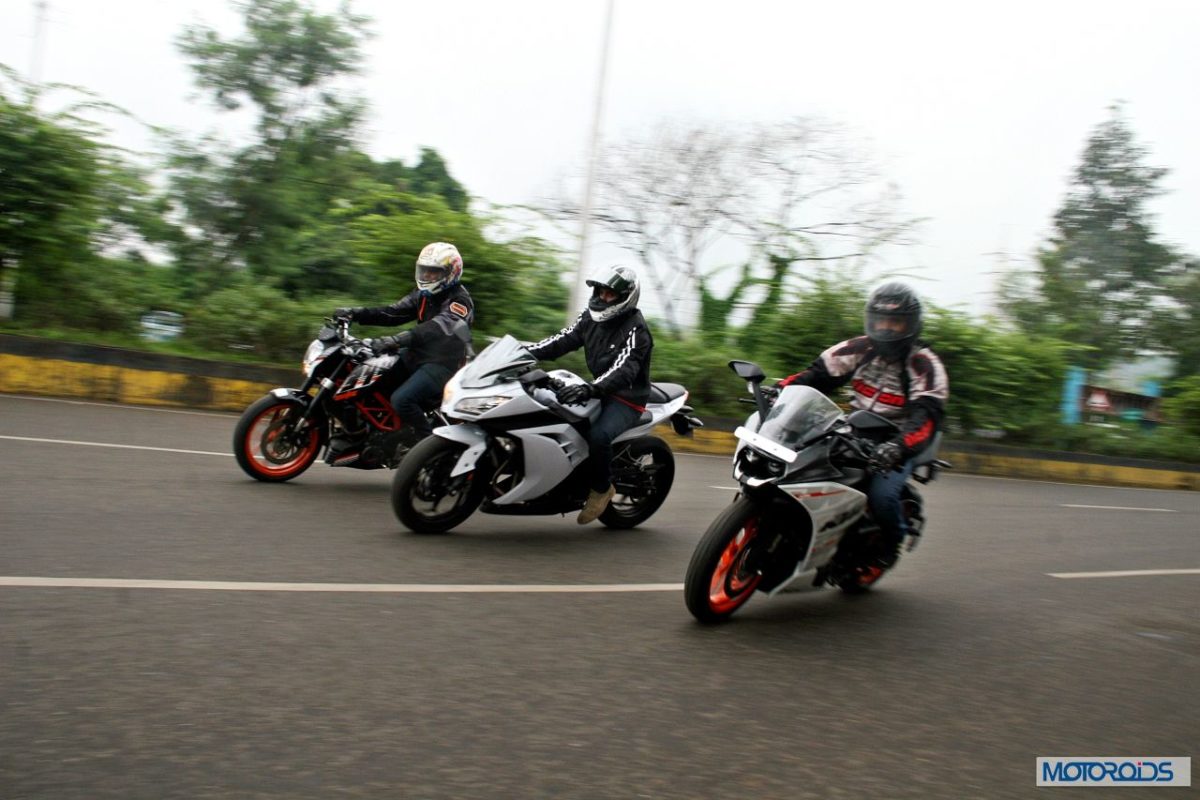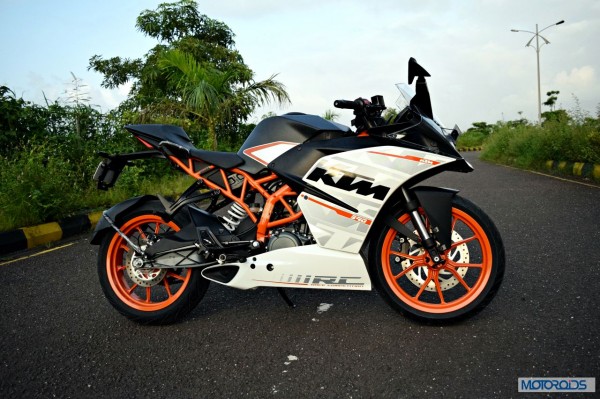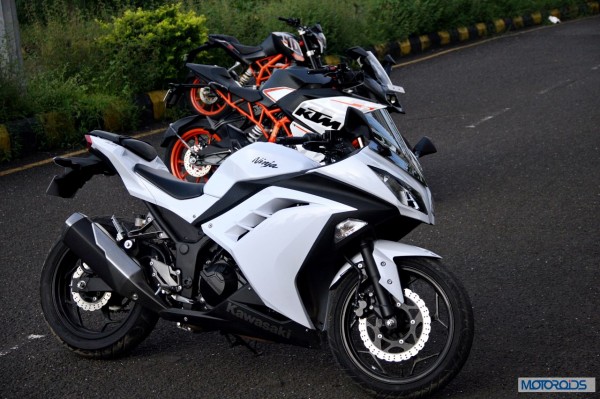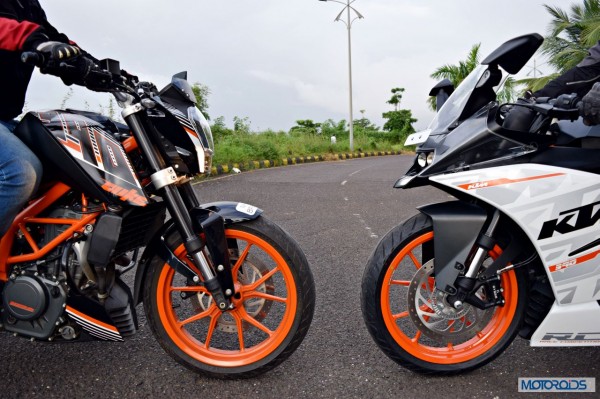Brakes
KTM RC 390
Braking duties on the RC 390 are taken care by a 4-piston radially bolted caliper with a combo of a single 300 mm brake disc at the front and a 1-piston floating caliper with a 230 mm single disc at the back. Although a setup which is similar to the Duke 390, braking on the RC felt more reassuring and a wee bit more confidence inspiring. Similar to the Duke, the Metzeler rubber ensures the bike stays on track even under hard braking, while ABS ensures fish tailing is only a sight for the aquarium. However, if you like locking rubber or for any other reason, ABS can be switched off.
Kawasaki Ninja 300
The Kawasaki comes with a 290mm petal disc up front and 220mm petal setup at the rear. The 300 has satisfactory stopping power, but doesn’t quite dazzle you when it drops the anchors as much as the KTM’s. The sharpness is missing and there is a lack of bite. The Ninja would feel more controllable with some added bite and some more feel at the lever. Since tyres contribute immensely in the overall braking feel, it is surprising that the almost half priced KTM’s come with better rubber in comparison to the IRC’s on the Ninja, which although not all that bad, are just about OK.
KTM Duke 390
Since both the KTM’s here share similar braking equipment along with the rubber, there isn’t much difference except the fact that the RC 390 felt more confident under heavy braking, which could be attributed to the aggressive front biased riding position and some added weight. The Duke also has marginally more suspension travel in comparison to the RC, which makes it pitch that much more.
>>Next page for a head-to-head comparison>>





I agree that the Duke has the initial pull, or its atleast equal from what I could make out at the BIC trackday, Noida.
However, I did ride the Duke 390 (road+track, I own one) and Ninja 250 (on the road), and I believe that an important point is that the Ninja has a wider powerband.
That means if you get distracted or have a corner ahead, and over rev the Ninja beyond its max power point, there’s still a long way before rev limiter…. So, no problems here.
But should the Duke miss the Max power gearshift, its rev limiter right away. And you go back by 3-4 bike lengths normally….
For racing, more cylinders are always better. On road, I believe its Vice Versa, seeing the SuperDuke 1290 and the Duke 390 too.